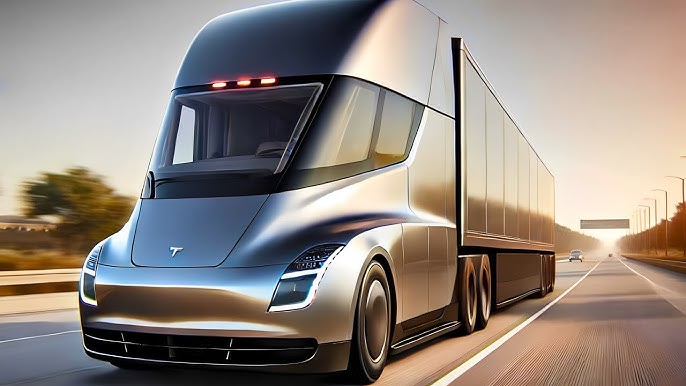
Breaking Down the Tesla Semi Production Slowdown
The Tesla Semi debuted in 2017 but saw limited production in its early years. Following initial deliveries in 2022, only about 20 trucks were produced, mainly for PepsiCo, Tesla’s primary client. As of October 2023, Tesla had produced around 70 units, with most allocated to internal use and to PepsiCo. There are three main factors behind this limited production:
Lack of Automated Production Line: Until now, Tesla hadn’t fully automated its electric truck production line, which restricted output. With the new production facility nearing completion, Tesla is now set to mass-produce the Semi, pushing out hundreds of units once the line is fully operational.
Battery Production Constraints: The Semi requires a unique battery configuration, different from Tesla’s other vehicles. This battery setup needed additional development, but with the new factory and dedicated battery line, Tesla has overcome this hurdle, setting the stage for high-volume production.

Focus on Reliability Testing: Tesla has been rigorously testing the Semi in real-world scenarios to ensure it meets performance and durability standards. This commitment to quality testing, particularly with PepsiCo, allowed Tesla to refine the vehicle for better performance before ramping up output.
The Game-Changing Gen 2 Tesla Semi
The 2025 Gen 2 Tesla Semi promises a major leap in design and performance. Key upgrades include:
New Battery Pack: The G2 model features an upgraded battery, offering longer range and faster charging, essential for long-haul routes. This new battery technology is anticipated to extend range without sacrificing cargo capacity, making the Semi more efficient and cost-effective for logistics companies.
Enhanced Design and Aerodynamics: The Gen 2 Semi sports a sleeker design aimed at improving aerodynamics and reducing drag, which will increase range and efficiency on the road. Expect a more spacious cabin with a driver-focused layout and advanced tech integration to support long-haul comfort and productivity.
Automated Production and Lower Costs: With the new factory, Tesla aims to lower production costs, which could make the Semi more accessible to a broader range of customers. This marks a huge step in Tesla’s commitment to electrifying freight transport on a large scale.

Ready to Revolutionize Freight Transportation
Tesla’s vision for the Semi goes beyond just the trucking industry; it’s about creating a sustainable solution for freight transport. The 2025 model, with its G2 upgrades, promises to do just that. With plans for mass production, Tesla aims to put thousands of these trucks on the road, driving down operational costs for companies while reducing emissions in the logistics sector.
As production ramps up, we’re likely to see Tesla Semis becoming a more common sight on highways, transforming how goods are transported. Stay tuned as the Tesla Semi accelerates into the future of trucking!


